Slaya
Description
The Slaya, inhabiting the eastern half of Arboria, are a people deeply rooted in tradition and superstition. Their history is riddled with conflicts and crises centered around arcane practices, instilling in them a deep-seated mistrust, if not outright fear, of anything magical or supernatural. They view magic as an aberration from the natural order, something to be shunned as unnatural or malevolent. This skepticism towards the arcane, however, has not stifled their ingenuity. Instead, it has spurred the development of alternative means for simplifying life and ensuring their safety. They have excelled in industrial advancements and clockwork mechanization, a testament to their inventive spirit. These technological feats, while revered for their utility, are often regarded with a wary eye by the populace, as the Slaya are inherently cautious of the unfamiliar and the incomprehensible. To outsiders, the Slaya might occasionally seem unenlightened or primitive, a perception not entirely misplaced when considering some of the more rustic, rural communities. These areas often embody the stereotype of the "simpleton", but such a view overlooks the significant contributions of the Slaya to mechanical innovation. The Slaya have produced some of the world's most brilliant minds in mechanics, earning admiration from even their Dwarven allies, particularly for their Human-like Clockwork Automatons. Despite these advancements, the heart of the Slaya culture lies in their desire for simplicity and familiarity. The majority yearn for uncomplicated lives, cherishing what they know and are comfortable with. This preference for tranquility and routine is not born of purely ignorance, but rather a conscious choice as well, shaped by a history of struggle and adversity.History
Hyperboria
The earliest Slaya were nomadic tribes traversing the expansive taiga of ancient Hyperborea, located to the north of Arboria. They led insular lives, with minimal interactions with other Human cultures, and remained largely detached from the Elves during their Golden Age of near-godhood. The region now known as Kyrus, particularly its northern part, Syiv, held little allure for the Slaya, even in its warmer eras. The Elves, for their part, regarded the Slaya as mere primitives. Encounters between these two groups were rare, often resulting in the powerful Elven mages driving the Slaya back into their northern territories. Such encounters left a lasting impression on the Slaya psyche, leading to an ambivalent perception of the Elves: were they divine guardians of a sacred realm or selfish hoarders of their abundance?The Migration
The Great Migrations, a tumultuous period following The Cataclysm, marked a significant epoch in Slaya history. As the world reeled from the depletion of arcane energies, the Slaya, desperate to escape the advancing Ice Age from the north, embarked on a relentless southward exodus. This period is often characterized by the grisly image of the Slaya mercilessly slaughtering Elves. While such depictions paint the Slaya as savage marauders, the reality was more complex. The era was marked by multiple wars and peace treaties, frequently broken under the strain of deteriorating climatic conditions and the Elves' reluctance to cede territory. The struggle was arduous for both the Slaya and the Feynarin Elves, with neither side finding the journey easy. The Cataclysm had merely equalized the circumstances, not rendered the Elves powerless. Ultimately, it was a time that necessitated a victor, and the Slaya emerged with a profound distrust of Elves and arcane magic. This era also gave rise to a dark linguistic play on the name "Slaya," suggesting an etymological link to "Slayer", a reference to their bloody past and the genocidal warfare they were a part of during the Great Migrations.Petty Kingdoms
The vanguard of the Slaya's southward expansion crystallized into the fervent Masonites, devout adherents of the Church of the Mason. Unlike their kin, who gradually accepted certain forms of elemental and healing magic, the Masonites vehemently denounced all forms of magic and sought the complete eradication of the Elves, whom they branded as heathens. This deep-seated animosity only intensified with each battle, culminating in a standstill due to the desperate actions of the Witch Queen. With the demise of their prophet, the revered Mason, his sprawling religious dominion fragmented into numerous petty kingdoms. These new realms varied in governance: some were led by ecclesiastical figures, others by warlords who transitioned into nobility, and notably, the city-state of Starigrad emerged as a merchant oligarchy. This era marked the end of the Great Migrations and ushered in the Petty Kingdoms Era in eastern Arboria. To the south, the Vallarei Elves from Empyrion seized this moment of division, attempting to reclaim the northern territories for their Feynarin kin. Their advance was halted between the Valpine and Messial Mountains by a Coalition of realms that would eventually form modern Ardechia and Sturmgard. For the first time, Humanity, regardless of cultural differences, united against a shared Elven threat, preventing the Vallerian Empire from gaining a foothold in the north. However, this unity was short-lived. Once the external threat of the Vallarei receded, and even the Heimer Incursions were fought off, old rivalries and conflicts resurfaced. The eastern territories, marked by wars, shifting alliances, and strategic marriages, eventually consolidated into the formidable nation of Ardechia. Ardechia, in the east, maintained the Slaya legacy, while Sturmgard, in the west, became the stronghold of the Jermane. Concurrently in the north, the Slaya nation of Kyrus emerged from a personal union of two realms within Eastmarsh. United, Kyrus expanded its borders westward, leading to inevitable conflicts with the Heimer peoples.Great Powers
In the present era, the Slaya legacy endures in several smaller realms as well, notably Vishigrad, Lavonia, and Groziya. These territories are nestled within the protective folds of the formidable Messial Mountains. Meanwhile, the Slaya of the lowlands have consolidated into two dominant powers: the Kingdom of Ardechia and the Tsardom of Kyrus, each a formidable entity in its own right. Ardechia stands as the Slaya juggernaut, steadfastly upholding the Masonite doctrine of eschewing all forms of magic. Occupying half of the verdant and fertile Heartlands, Ardechia is recognized as Arboria's breadbasket, boasting the largest population in the region. The kingdom has distinguished itself through mechanical innovation, fostering advances seen as a pragmatic alternative to arcane practices. Kyrus, on the other hand, aligns itself with the Divine Flame, the orthodox faith that sired the Church of the Mason. While the Divine Flame denounces Arcane energies, it embraces elemental and healing magics, particularly those involving fire. Kyrus's vast territory exceeds even that of Ardechia, but its harsh, cold, and bleak landscape results in sparse population density. However, Kyrus compensates for this with exceptional fortification and military technique, asserting itself as an isolationist powerhouse. As the sole nation sharing a land border with the belligerent Heimer and guarding the perilous Frost Wastes to the north, formerly known as Hyperborea, Kyrus serves as a bulwark against external threats, including the numerous monsters and giants that now roam these forsaken lands. Notably, a segment of the Slaya population ventured beyond the Messial Mountains, merging with the Nemedi people in what would become known as the steppes of Kassaria. This union birthed a unique amalgam of cultures, leading to the formation of a nation which the region became known and named after.Architecture
The upper
In the heart of Slaya cities, grandiose structures of stone and mortar reach towards the heavens, their spires and domes crowned with gilded vanes and intricate sculptures that reflect the wealth and power of the city's elite. These edifices, often drenched in historical significance, stand as monuments to the Slaya's reverence for tradition and their governing principles. Lofty arches and vast stained-glass windows depict scenes of historical triumphs and religious sanctity, inviting both the curious onlooker and the devoted believer into their hallowed halls. These buildings serve as the hub for both governmental authority and religious worship, intertwining the civic and the sacred in the very fabric of their construction.The urban
As one ventures beyond the ceremonial core, the architecture transforms into the robust utilitarian style of urban dwellings and marketplaces. Here, the buildings are predominantly constructed from locally-sourced stone and red brick, featuring steeply pitched roofs to ward off the heavy snows. The ground floors are reserved for tradesmen, their shops fronted by wooden shutters and awnings, while the upper stories provide modest living quarters. Cobblestone streets, lined with open-air markets and vibrant merchant stalls, are bustling with trade and the daily life of the townsfolk. Public squares serve as gathering places for festivals and fairs, their lively atmosphere reflecting the communal spirit of Slaya society.The rural
In the rural regions, the landscape is dotted with modest villages, their architecture a testament to the simplicity and practicality of country living. Homes are often single-story, constructed of wood with thatched roofs, designed to blend seamlessly into the surrounding natural environment. The large hearth is the centerpiece of the home, providing warmth and a place for communal cooking. These villages are self-sufficient entities, with barns for livestock and granaries for storage, reflecting the Slaya's deep connection to the land and their agricultural roots. The simplicity of these structures belies their importance, as they are the backbone of the Slaya's sustenance and survival.Clothing
General Aesthetics: Slaya clothing is characterized by its functional design, heavily influenced by the need for warmth and movement in daily tasks. The attire is robust, with a nod to traditional styles, showcasing intricate patterns and embroidery that signify cultural heritage. Men typically wear tunics and trousers that afford ease during labor or travel, while women's garments consist of layered skirts and blouses that blend practicality with a touch of elegance. Materials: Durability is key in Slaya fashion, with heavy wools, leathers, and furs being predominant, especially in colder regions. Linen and cotton are preferred in milder climates for their breathability and comfort. Embellishments often include woolen embroidery, leather trims, and occasionally, metallic accents for those of higher social standing. Color Palette: The color scheme is earthy and muted, drawing from the natural landscape. Shades of browns, greens, and creams are commonplace, with occasional vibrant highlights such as deep reds or blues. These colors are also used to adorn the edges of garments or for detailed embroidery, adding depth and cultural significance to the attire. Details and Accessories: Accessories serve both practical and symbolic purposes. Belts and sashes are common for securing clothing and carrying tools or weapons. Jewelry is minimal but often carries significant meaning, such as clan symbols or protective charms. Embroidery on garments often tells a story or marks important events or legends. Footwear: Footwear is sturdy and weather-appropriate, with leather boots being the staple for both men and women. They are designed to withstand the marshy terrains and cold climates, often lined with fur or wool for additional insulation. Utility: The clothing is designed with the their living conditions in mind. Capes and cloaks with hoods provide protection from the elements, while pockets and pouches are essential for carrying everyday items. Women's skirts are designed to allow freedom of movement, and men's trousers are reinforced in areas subject to wear from work or travel.
Related Organizations
Related Locations

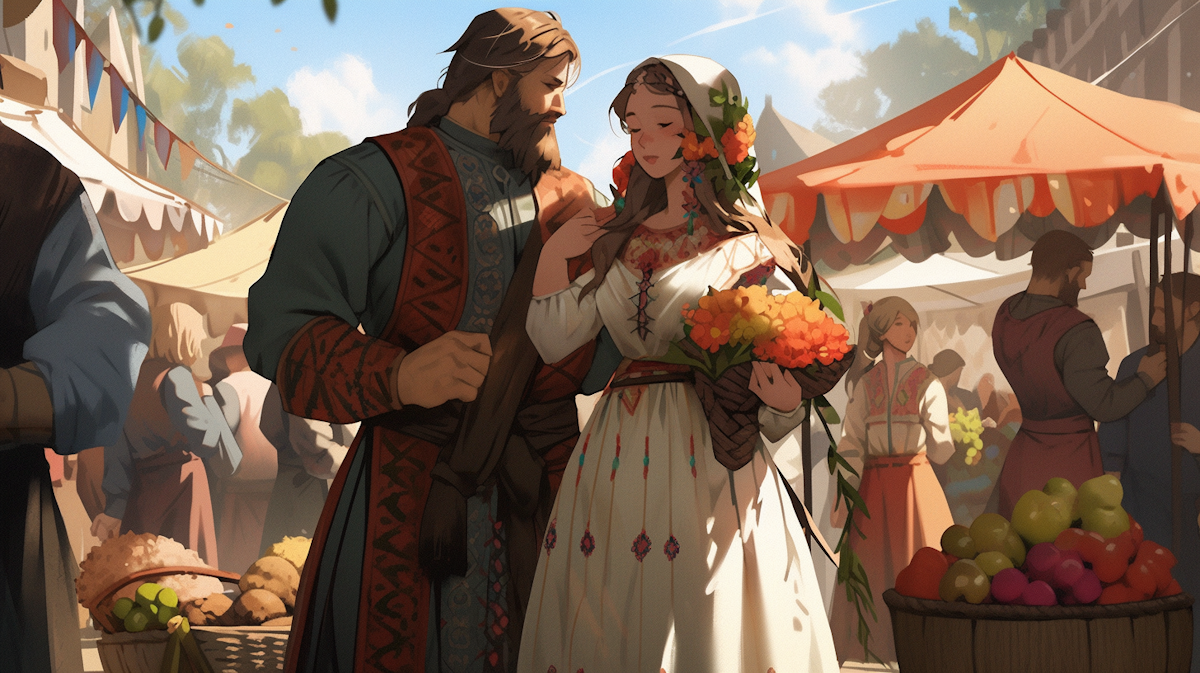
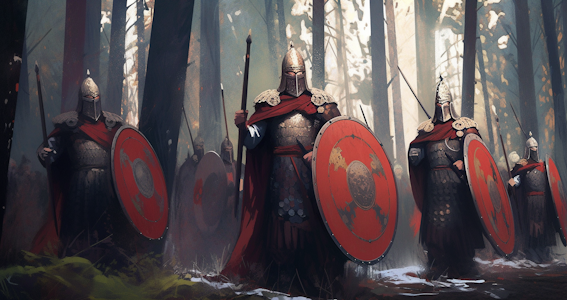
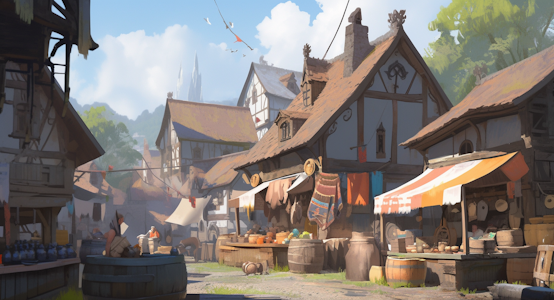
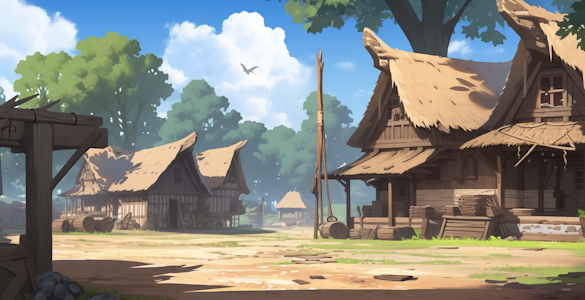
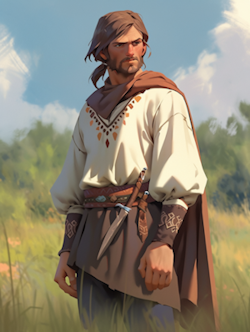
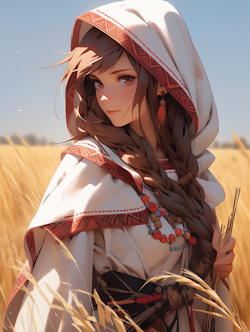

Comments